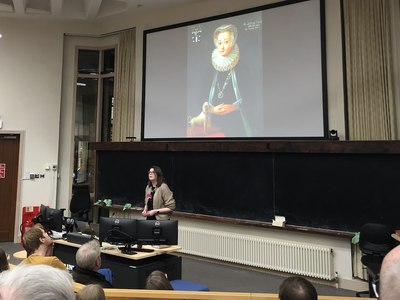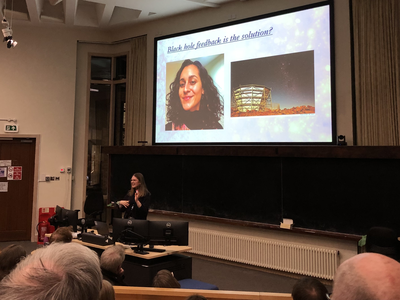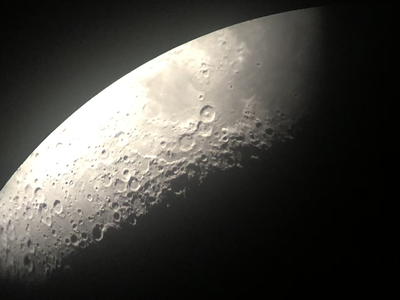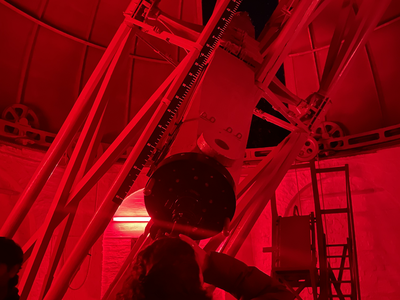Inspirational Women of Astronomy: A Night at the Institute of Astronomy
I left the Institute uplifted, with a deep sense of admiration for researchers striving to understand our universe and champion the work of women along the way.
The event drew a huge audience, with people encouraged by the week of International Women's Day and the promise of a clear sky for stargazing. The lecture theatre was full of people of all ages, a testament to the Institute's reputation for delivering engaging public events.
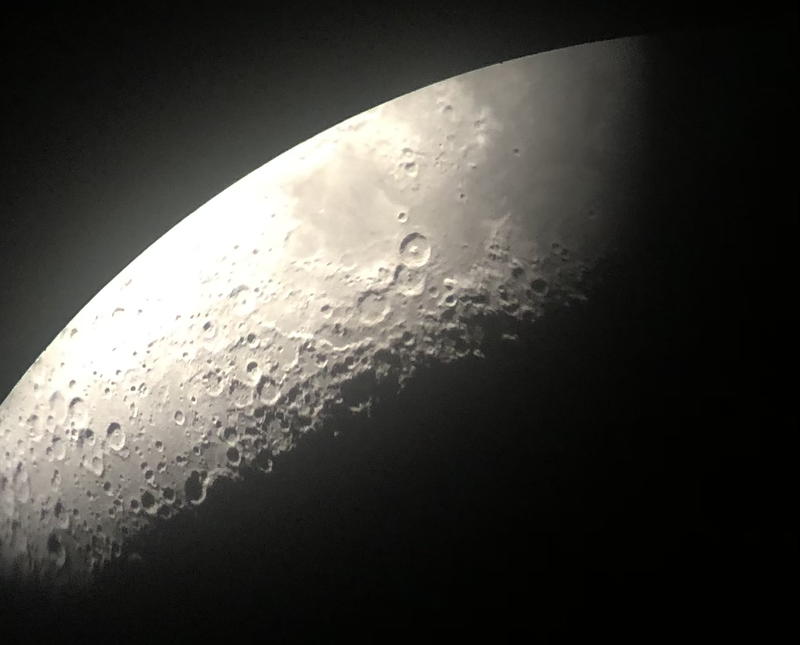
A Fresh Perspective on Astronomy
It was clear that astronomy was a special interest of many people in the crowd. For me, astronomy is a field I cannot claim much familiarity with, one perhaps that I dismissed too early on as a space I would not belong. However, hearing three women speak so passionately about their research made me reconsider my assumptions.
Each speaker delivered an expert talk on their own research and highlighted the work of another woman astronomer who inspires them. Their enthusiasm was infectious, broadening my perspective on astronomy. From supernovae to exoplanets to black holes, I was introduced to fascinating research and inspiring women excelling in this domain.
Dr Lisa Kelsey: The Double Star System
Dr Lisa Kelsey began the evening with a talk on the explosions of small, dense stars known as white dwarfs. These events, called Type Ia supernovae, occur in double star systems where one or both stars pull material from the other until a spectacular explosion occurs.
Using this 'two stars' analogy, Dr Kelsey introduced us to Danish astronomers Tycho and Sophie Brahe.
Brother and Sister Astronomers: Tycho and Sophie Brahe
Tycho Brahe is renowned for his incredibly precise astronomical observations before the invention of the telescope, and his work led to the discovery that stars evolve over time. However, as Dr Kelsey explained, the contributions of his youngest sister, Sophie Brahe, are often overlooked despite being instrumental in his success.
Although her family discouraged her, Sophie Brahe pursued an education in astronomy - an achievement worthy of admiration in itself. Recognising her talents, Tycho invited her to assist with his observations. Dr Kelsey suggested that Sophie became fundamental to the operations of Uraniborg, the first modern observatory. These siblings formed a true double star system, each shining as brightly as the other, deserving equal recognition.
Frances Rigby & Dr Jane (no relation) Rigby: Exploring Exoplanets
The fourth-year PhD student Frances Rigby took us on a journey through exoplanets - planets that orbit stars outside our solar system. Frances described the diversity of these worlds, from hycean planets (hydrogen-rich ocean worlds) to hot Jupiters and sub-Neptunes and explained how she figures out the composition of exoplanet interiors and atmospheres. Frances described the Transit method of detection, where the shadow of an exoplanet passing in front of a star reveals data about its size and composition.
Speaking of stepping out of the shadows, Frances concluded her talk by highlighting the work of her inspiration, Dr Jane Rigby. Dr Rigby is the science operations lead of the world's most powerful telescope, the James Webb Space Telescope. She and her team use it to study the physical conditions of distant galaxies and exoplanets. In addition to being an accomplished astronomer, Dr Rigby is also a strong advocate for diversity and inclusion in space exploration. Prior to the recent 'change of management' in the US, Dr Rigby was awarded the United States' highest civilian honour, the Medal of Freedom, for her contributions. Dr Rigby’s advice? "Do fabulous science, be fabulous, and be proud." It is clear why she serves as a role model for astronomers like Frances.
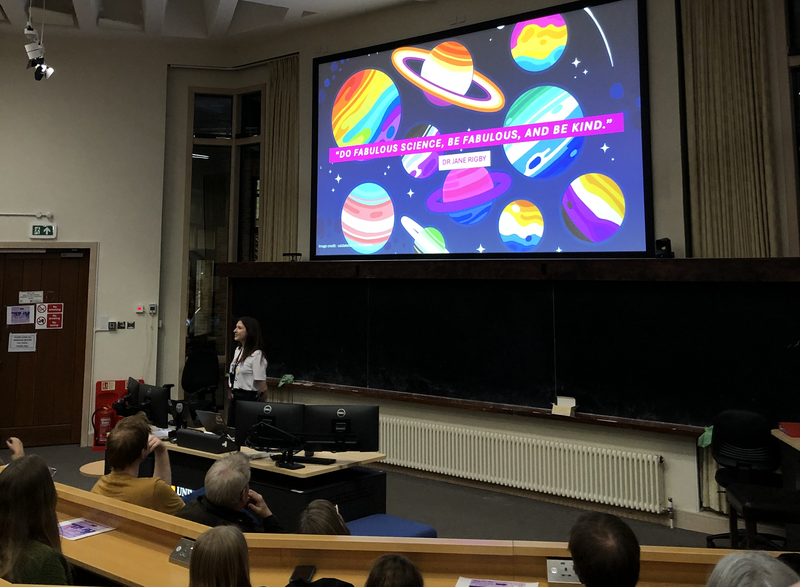
Leah Bigwood: Super Massive Black Holes
The cheerful third-year PhD student Leah Bigwood introduced us to black holes and their role in shaping the universe. Leah explained how black holes form where previous stars have died and how they come in different sizes, all with masses far exceeding that of our sun. Leah’s research focuses on supermassive black holes, which sit at the centre of galaxies, yet their formation remains unclear.
Black holes are observed by tracking the motion of the stars around them. Leah told us that black holes not only pull matter in, as we might expect, but also push matter out, launching jets of gas in a process called black hole feedback. Leah's research examines this feedback, which plays a fundamental role in galaxy formation.
A Fresh Approach to Black Hole Research
Leah described a fierce debate within the field regarding the magnitude of black hole feedback, with scientists worldwide arguing over its significance and the distances at which it affects surrounding matter. She introduced us to her supervisor, Dr Alexandra Amon, whose approach to resolving this debate inspires her.
Dr Amon leads DarkLab at the University of Princeton, where her team aims to observe black hole feedback directly. Dr Amon’s research suggests that existing simulations underestimate the true magnitude of black hole feedback. If proven correct, this could help resolve the S8 tension, a major astrophysical disagreement about how matter clumps together in the universe. Leah and Dr Amon’s work could be key to unlocking our understanding of cosmic evolution - if they can convince the scientific community of their findings!
Leah spoke with immense passion about both her research and her mentor, Dr Amon. Seeing the confidence she drew from having a strong role model underscored the importance of fostering supportive academic environments where women can thrive.
Things are Looking Up
After the talks, we were invited to join Institute volunteers for a night of stargazing. I had the opportunity to look through a telescope for the first time - and what an experience it was! These were no ordinary telescopes; they were 19th-century instruments that filled the room. "Real deal raw astronomy," as one of the telescope operators put it.
We queued eagerly for our turn to glimpse the moon, listening to gasps of awe as each person peered through the lens. Having spent years looking down the eyepiece of a microscope, it was exhilarating to shift my perspective upwards to the night sky. And the view did not disappoint.
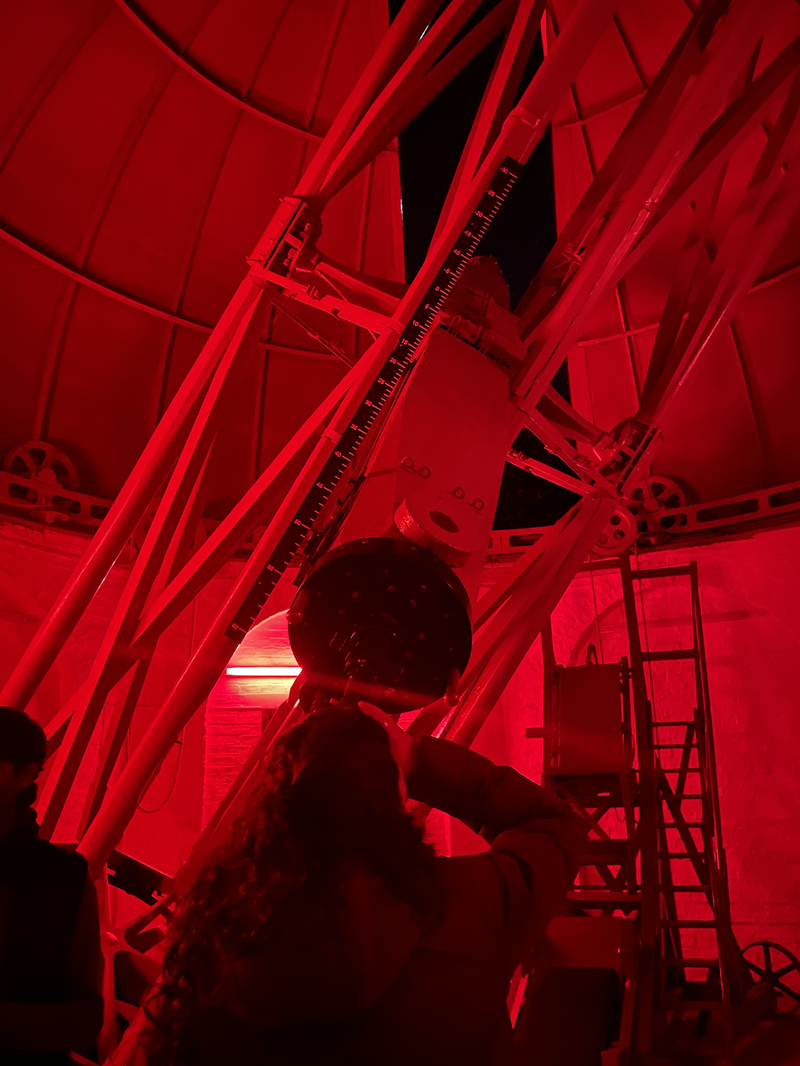
The Inspirational Women of Astronomy evening was truly eye-opening. It deepened my appreciation for a field I had never considered in detail and showcased the brilliance of women pushing the boundaries of knowledge. As I left the Institute of Astronomy, I carried with me a renewed sense of curiosity and a profound admiration for those who look beyond our world to understand the vast universe beyond.
The sky may not be the limit if the glass ceiling can become a telescope.
